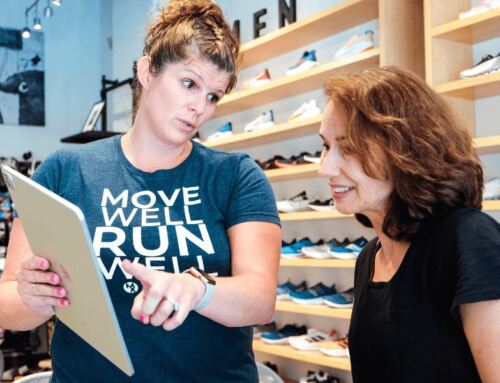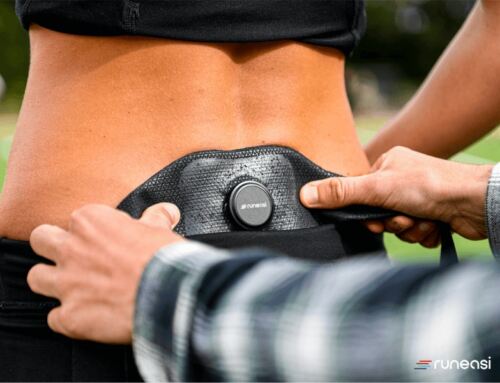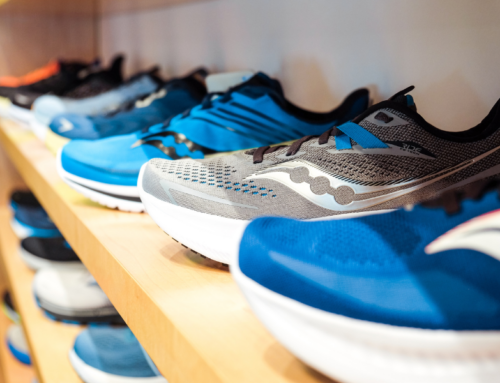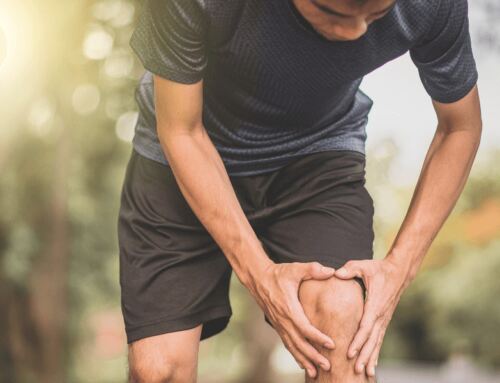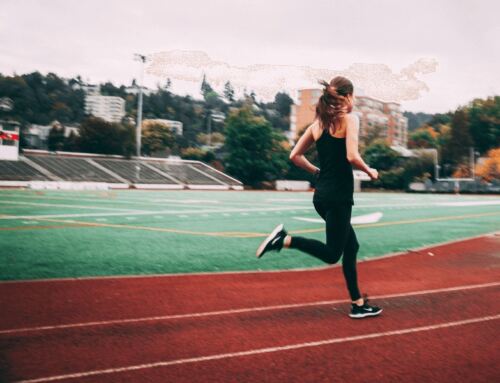Finding the Right Running Shoe—MovementX Perfect Shoe Fit
MovementX is proud to offer a comprehensive and expert shoe fitting analysis that helps you run well and live well.
Running is one of the most accessible and effective forms of exercise, but having the right pair of running shoes can make a world of difference in your comfort, performance, and pain.
Have you ever wondered…
- What’s the right shoe for me?
- Do these individuals at the shoe store who are fitting me have true expertise in orthopedics, injury prevention, and performance?
- How can I be sure I am setting my running up for success?
Whether you’re a seasoned marathoner or just starting your running journey, finding someone you trust to help you find the perfect pair of running shoes is essential to running efficiently and staying injury free.
There are numerous factors that come into play when looking for the right running shoe such as foot type, foot strength and mobility, range of motion in the foot, ankle and hips, posterior chain strength and run form. The MovementX Perfect Shoe Fit takes all those factors into consideration and works with run store professionals to find the perfect shoe for your body and your run form.
In this article, we’ll guide you through the process of working with your running physical therapist to explain how the Perfect Shoe Fit service works and help you select the ideal running shoes for your needs.

Step 1: Determine Your Foot Type
Before you begin your shoe journey, it’s crucial to understand your foot type. There are three common types: pronation, supination, and neutral.
- Pronation: If your feet tend to roll inward when you run, you have a pronation foot type. Look for shoes with stability or motion control features to provide proper support.
- Supination: Supination, or underpronation, is when your feet roll outward. You’ll want shoes with extra cushioning and flexibility to absorb shock.
- Neutral: If your feet maintain a natural, neutral position, you have a neutral foot type. You have a wider range of shoe options, but cushioned shoes are often a good choice.
A MovementX running physical therapist will assess your foot structure and how it changes as you move.
Step 2: Observe Your Foot Width
Foot width is also a critical component of the shoe fitting. Being in a shoe that accommodates your foot type AND width allows your foot to function at its best
Here are a couple things a physical therapist who specializes in running will examine:
- Take the insole out of your current shoe, step on to it, and stand on one foot.
- Does your foot fully fit in the insole?
- Do you have portions of your foot hanging over?
- How would changing the width of the insole impact your performance?
Step 3: Establish Your Running Goals
Consider your running goals and the type of running you’ll be doing:
- Road Running: If you primarily run on paved surfaces like roads and sidewalks, look for shoes designed for road running, with adequate cushioning and durability.
- Trail Running: Trail running shoes are built to handle rough terrain, with better traction and protection for your feet.
- Racing: For speed and performance in races, lightweight racing flats or minimalist shoes may be suitable, but these are not recommended for beginners.
- Daily Training: If you plan to run for fitness and health, everyday training shoes with a good balance of cushioning and support are ideal.
Your physical therapist will discuss your running goals and ensure you find the appropriate shoe based on your goals.

Step 4: Visit a Specialized Running Store with your MovementX Physical Therapist
At the store, we will guide you through a variety of tests to determine foot and ankle strength, control, and range of motion. We will also guide you into functional movement patterns and some applicable strength tests for runners. This will help us get an idea of not just your structure, but how you move and perform.
Next, your PT will use a video analysis of your run in your current shoes to determine any run flaws that are contributing to current or potential pain or injury.
Finally, we will work with the running store professionals to find you a shoe based on all the information that we collected to get you running comfortably.
Step 5: Test Out Your Running Shoes
Don’t rush your decision. Once you’ve selected a few potential options, take them for a test run. Most running stores allow customers to try out shoes briefly on a treadmill or in-store. Pay attention to how they feel during your run and if they offer the support and comfort you need.
Conclusion
Many runners have run in the same brand or style of shoes for years. However, if you are struggling with consistent lower extremity pain such as shin splints, plantar fascia inflammation or toe pain, you may be in the wrong shoe.
A MovementX Physical therapist can meet you at your local shoe store, perform a series of functional testing and exercises, evaluate your run and work with shoe store representatives to find you the perfect shoe.
Finding the perfect pair of running shoes may take some time and effort, but it’s an essential step in ensuring a comfortable and injury-free running experience. With the right shoes on your feet, you’ll be well-equipped to embark on a successful and enjoyable running journey.
About the Author
Dr. Meg Pezzino is a physical therapist in Northern Virginia with MovementX. As a Board Certified Specialist in Sports Physical Therapy with over 14 years of experience, she loves helping runners stay healthy, fast, and injury-free. She offers a suite of specialized physical therapy services for runners, including shoe fitting, slow motion gait analysis, and more.




